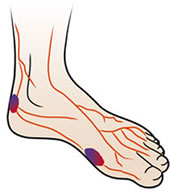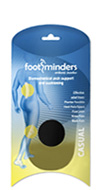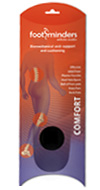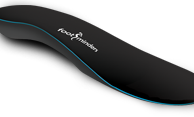Diabetic Foot Care: Helpful Guidelines and Tips
Proper foot care is very important for people with diabetes. Diabetics often suffer from poor circulation and loss of sensation in their extremities; most commonly of their feet. As the diabetic process continues, neuropathy can lead to sensory difficulties. This condition often leads to poor shoe fit, which creates points of excessive pressure and friction. As a result, it is not uncommon for injuries to go undetected. The eventual result is skin ulcerations, infections, and in extreme cases, amputation.
 Diabetic Foot Care and Sore Prevention
Diabetic Foot Care and Sore Prevention
In order to avoid the formation of sores due to friction and pressure points. proper shoe fit is absolutely critical . It is also important that the shoe length and width match the foot’s dimensions properly. Additionally, the heel counter needs to provide proper support, and seams or stitching inside the shoe also cannot be salient, since this will result in rubbing and chafing that could result in harmful sores.
The use of orthotic insoles can help prevent the development of friction and pressure sores. The reason is that excessive pronation leads to poor foot function, resulting in friction and pressure inside the shoe. Common places where unwanted friction can occur are under the ball of the foot, and on the outside of the big toe joint, where bunions can also form. These conditions can also occur on top of the toe joints.
Footminders Comfort orthotic insoles can assist, as they are ‘full-contact’ footbeds, distributing body weight over the entire surface of the foot. The insole also ensures proper biomechanical gait, helping to prevent excessive friction.
Footminders orthotics are made of a soft-medium density EVA, which conform to your foot after a short period of wear. The top layer is made of soft Durapontex material for extra shock absorption and added comfort.
NOTE: Diabetes sufferers should always consult their physician or podiatrist before wearing orthotics insoles.
Other tips for diabetic foot care:
- Inspect your feet every day for sores, swelling, discoloration, cuts, blisters, etc. Use a mirror to inspect the bottom of your feet.
- Keep your feet clean. Wash with warm, not hot, water with mild soap. Dry carefully, especially between the toes. Use lotion or foot cream on dry skin but don’t use it between the toes. Foot powder can be used between the toes if desired.
- Cut toenails straight across and keep them trimmed. Contact a podiatrist/pedicurist if you need help trimming your nails or need detailed instructions
- Change socks or stockings every day. Seamless fitted socks are best. Avoid tight elastics.
The Footminders insoles recommended to prevent diabetes-related foot problems are:

Footminders Casual |

Footminders Comfort |
 |



 100% Secure
100% Secure






